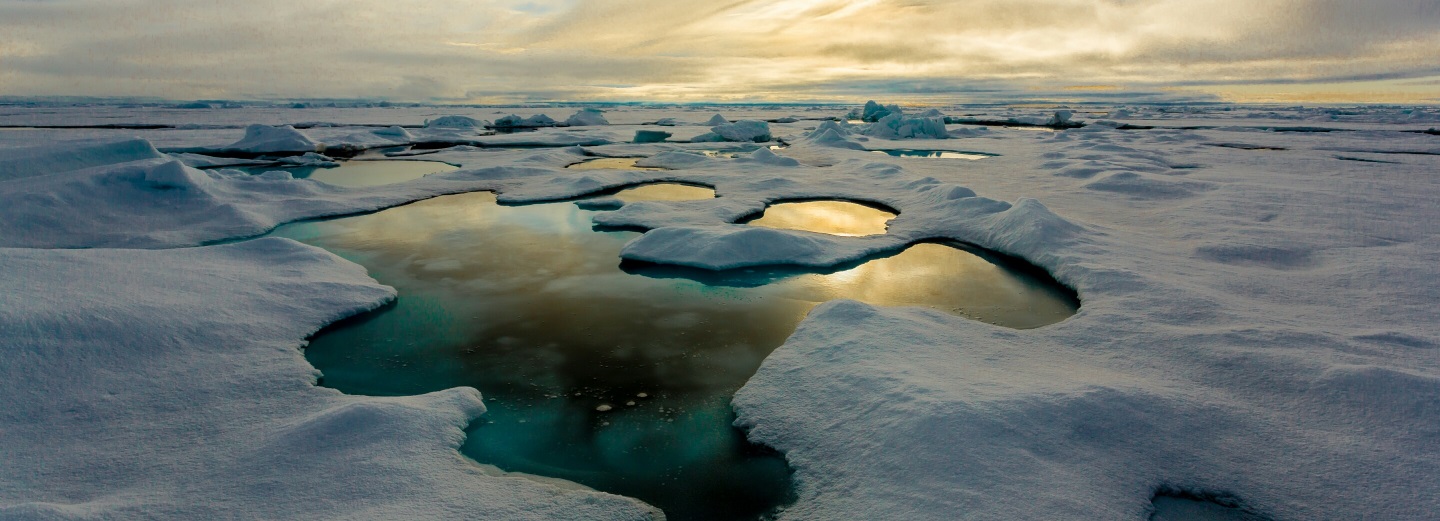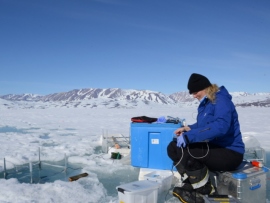
Melting sea ice may lead to more life in the sea
Every year an increasing amount of sea ice is melting in the Arctic. This can start a chain reaction, which leads to increased production of algae and hence more food for creatures in the sea.
By Birgitte Svennevig, birs@sdu.dk, 30-03-2017
When spring arrives in the Arctic, both snow and sea ice melt, forming melt ponds on the surface of the sea ice. Every year, as global warming increases, there are more and larger melt ponds.
Melt ponds provide more light and heat for the ice and the underlying water, but now it turns out that they may also have a more direct and potentially important influence on life in the Arctic waters.
Mats of algae and bacteria can evolve in the melt ponds, which can provide food for marine creatures. This is the conclusion of researchers in the periodical, Polar Biology.
Their own little ecosystems
- The melt ponds can form their own little ecosystem. When all the sea ice melts during the summer, algae and other organisms from melt ponds are released into the surrounding seawater. Some of this food is immediately ingested by creatures living high up in the water column. Other food sinks to the bottom and gets eaten by seabed dwellers, explains Heidi Louise Sørensen, who is the principal author of the scientific article, continuing:
- Given that larger and larger areas of melt ponds are being formed in the Arctic, we can expect the release of more and more food for creatures in the polar sea.
Heidi Louise Sørensen studied the phenomenon in a number of melt ponds in North-Eastern Greenland as part of her PhD thesis at University of Southern Denmark (SDU). Bo Thamdrup and Ronnie Glud of SDU, and Erik Jeppesen and Søren Rysgaard of Aarhus University also contributed to the work.
Food for seals and sea cucumbers
In the upper part of the water column it is mainly krill and copepods that benefit from the nutrient-rich algae and bacteria from melt ponds. These creatures are eaten by various larger animals, ranging from amphipods to fish, seals and whales. Deeper down, it is seabed dwellers such as sea cucumbers and brittle stars that benefit from the algae that sink down.
For some time now, researchers have been aware that simple biological organisms can evolve in melt ponds – they may even support very diverse communities. But so far it has been unclear why sometimes there are many organisms in the ponds, and on other occasions virtually none.
According to the new study, ‘nutrients’ is the keyword. When nutrients such as phosphorus and nitrogen find their way into a melt pond, entire communities of algae and micro-organisms can flourish.
This is why the number of melt ponds is on the rise

Global warming is melting more and more sea ice, potentially forming an increasing number of melt ponds. NASA satellites have just measured the smallest ever distribution of sea ice in the Arctic. The melt ponds make the ice darker, so it absorbs, rather than reflects light and thereby it heats. This accelerates the melting process. Satellite photos show that areas with melt ponds are getting bigger each year.